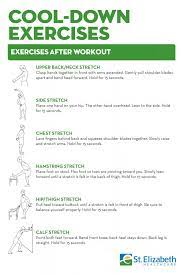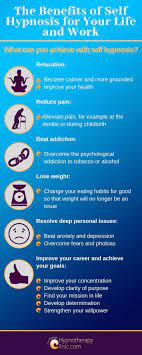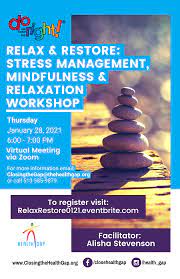Cool Down Exercises: The Key to Post-Workout Recovery
We all know the importance of warming up before exercise to prepare our bodies for the physical demands ahead. But what about cooling down after a workout? Many people underestimate the significance of this crucial step in their fitness routine. Cool down exercises are just as important as warming up, as they aid in the recovery process and promote overall well-being.
So, what exactly are cool down exercises? They are a series of low-intensity movements performed after a workout to gradually bring your heart rate and body temperature back to normal. Cool down exercises help your body transition from an intense state to a relaxed state, allowing it to recover more effectively.
Here are some benefits of incorporating cool down exercises into your fitness routine:
Enhanced Recovery: Cooling down after exercise helps reduce muscle soreness and stiffness by promoting blood circulation. It allows waste products, such as lactic acid, to be flushed out of your muscles, preventing potential cramping or discomfort.
Injury Prevention: Engaging in cool down exercises can help prevent injuries by gradually decreasing your heart rate and reducing the risk of sudden blood pressure drops. It also helps release tension in your muscles and joints, making them less prone to strains or sprains.
Improved Flexibility: Including stretching exercises during your cool down routine can improve flexibility over time. When your muscles are warm from exercise, they become more pliable, making it easier to stretch and increase your range of motion.
Mental Relaxation: Cool down exercises provide an opportunity for mental relaxation and reflection after an intense workout session. As you focus on breathing deeply and performing gentle movements, you allow your mind to unwind, promoting a sense of calmness and overall well-being.
Now that we understand the importance of cooling down let’s explore some effective cool-down exercises:
Walking or Slow Jogging: Gradually decrease the intensity of your workout by transitioning into a slower pace. This helps bring your heart rate down while still keeping your body in motion.
Static Stretches: Target major muscle groups with static stretches, holding each stretch for 15-30 seconds without bouncing. Focus on areas like your calves, hamstrings, quadriceps, chest, and shoulders.
Yoga or Pilates: Engage in gentle yoga or Pilates exercises to promote flexibility, balance, and relaxation. These low-impact activities can help release tension and improve overall body awareness.
Foam Rolling: Use a foam roller to massage and release tension in specific muscle groups. Roll slowly over tight areas to alleviate knots and improve blood flow.
Remember, cool down exercises should be tailored to your specific workout routine and fitness level. Aim to spend at least 5-10 minutes on cool down exercises after each workout session.
In conclusion, cooling down after exercise is an essential part of any fitness regimen. By incorporating cool down exercises into your routine, you can enhance recovery, prevent injuries, improve flexibility, and promote mental relaxation. So next time you finish a workout session, don’t skip the cool down – your body will thank you!
7 Frequently Asked Questions About Cool Down Exercises: Importance, Benefits, Duration, and More
- Why is cooling down important after exercise?
- What are the benefits of incorporating cool down exercises into my fitness routine?
- How long should I spend on cool down exercises?
- What are some effective cool down exercises I can do?
- Can cool down exercises help prevent muscle soreness and stiffness?
- Are there specific stretches that are recommended for a cool down?
- Can cooling down after exercise improve my flexibility over time?
Why is cooling down important after exercise?
Cooling down after exercise is important for several reasons:
- Promotes Recovery: Cooling down allows your body to gradually transition from a state of high intensity to a resting state. By engaging in low-intensity exercises, you help your body remove waste products, such as lactic acid, that have built up during exercise. This promotes faster muscle recovery and reduces post-workout soreness.
- Prevents Blood Pooling: During exercise, blood vessels dilate to supply oxygen-rich blood to your working muscles. If you abruptly stop exercising without a cool down, the blood can pool in your extremities, leading to dizziness or fainting. A proper cool down helps maintain healthy blood circulation and prevents sudden drops in blood pressure.
- Reduces Muscle Stiffness: Intense workouts can cause muscles to tighten and become stiff. Cooling down with gentle movements and stretches helps relax the muscles and prevent them from becoming excessively tight. This improves flexibility and reduces the risk of muscle strains or injuries.
- Lowers Heart Rate Gradually: During exercise, your heart rate increases to meet the demands of physical activity. A cool down period allows your heart rate to gradually return to its resting rate, reducing stress on the cardiovascular system. This gradual decline in heart rate helps prevent dizziness or irregular heart rhythms that can occur when you abruptly stop exercising.
- Enhances Mental Relaxation: Cool down exercises provide an opportunity for mental relaxation and reflection after an intense workout session. By focusing on deep breathing and gentle movements, you can calm your mind and reduce stress levels. This promotes a sense of overall well-being and aids in recovery both physically and mentally.
Incorporating a proper cool down into your fitness routine is essential for maximizing the benefits of exercise while minimizing the risk of injury or discomfort afterward. It only takes a few minutes but offers significant advantages for your body’s recovery process and long-term fitness goals.
What are the benefits of incorporating cool down exercises into my fitness routine?
Incorporating cool down exercises into your fitness routine offers numerous benefits for your body and overall well-being. Here are some key advantages:
- Enhanced Recovery: Cooling down after exercise helps reduce muscle soreness and stiffness. By gradually decreasing your heart rate and promoting blood circulation, cool down exercises facilitate the removal of waste products, such as lactic acid, from your muscles. This process aids in the recovery process and prevents potential cramping or discomfort.
- Injury Prevention: Engaging in cool down exercises can help prevent injuries by gradually decreasing your heart rate and reducing the risk of sudden drops in blood pressure. It also helps release tension in your muscles and joints, making them less prone to strains or sprains during subsequent workouts.
- Improved Flexibility: Including stretching exercises during your cool down routine can improve flexibility over time. When your muscles are warm from exercise, they become more pliable, making it easier to stretch and increase your range of motion. Regularly incorporating stretches into your cool down can lead to improved overall flexibility.
- Mental Relaxation: Cool down exercises provide an opportunity for mental relaxation and reflection after an intense workout session. As you focus on breathing deeply and performing gentle movements, you allow your mind to unwind, promoting a sense of calmness and overall well-being.
- Transition to Resting State: Cool down exercises help transition your body from an intense state to a resting state more smoothly. By gradually decreasing the intensity of your workout, you allow your body’s systems to adjust back to normal levels at a gradual pace, minimizing stress on the cardiovascular system.
- Psychological Benefits: Incorporating cool down exercises into your fitness routine can have positive psychological effects as well. It allows for a dedicated period of time where you can focus solely on yourself, promoting mindfulness and self-care.
Remember that cool down exercises should be tailored to suit your specific workout routine and fitness level. Aim to spend at least 5-10 minutes on cool down exercises after each workout session to reap the maximum benefits. Prioritizing a proper cool down can help optimize your fitness journey and support your overall health and well-being.
How long should I spend on cool down exercises?
The duration of cool down exercises can vary depending on the intensity and duration of your workout. As a general guideline, aim to spend at least 5-10 minutes on cool down exercises. This timeframe allows your body to gradually transition from a state of exertion to a more relaxed state.
During this time, you can engage in low-intensity activities such as walking, slow jogging, or gentle stretching. It’s important to focus on the major muscle groups that were involved in your workout and perform static stretches, holding each stretch for 15-30 seconds without bouncing.
If you’ve had an especially intense or prolonged workout, you may want to consider extending your cool down period slightly. This will give your body more time to recover and promote optimal muscle relaxation.
Remember that the purpose of cool down exercises is to bring your heart rate and body temperature back to normal gradually. It’s also an opportunity for mental relaxation and reflection after a workout session. Listen to your body and adjust the duration of your cool down accordingly.
Ultimately, finding the right balance for your cool down routine is essential for maximizing the benefits of post-workout recovery and promoting overall well-being.
What are some effective cool down exercises I can do?
Here are some effective cool down exercises you can incorporate into your post-workout routine:
- Walking or Slow Jogging: Gradually decrease the intensity of your workout by transitioning into a slower pace. This helps bring your heart rate down while still keeping your body in motion.
- Static Stretches: Target major muscle groups with static stretches, holding each stretch for 15-30 seconds without bouncing. Focus on areas like your calves, hamstrings, quadriceps, chest, and shoulders. Examples include calf stretches, hamstring stretches, quad stretches, chest stretches, and shoulder stretches.
- Yoga or Pilates: Engage in gentle yoga or Pilates exercises to promote flexibility, balance, and relaxation. These low-impact activities can help release tension and improve overall body awareness. Try exercises like child’s pose, cat-cow stretch, spinal twists, and seated forward bends.
- Foam Rolling: Use a foam roller to massage and release tension in specific muscle groups. Roll slowly over tight areas to alleviate knots and improve blood flow. Focus on areas such as the calves, thighs (quadriceps and hamstrings), glutes, back muscles, and shoulders.
- Deep Breathing: Sit or lie down comfortably and take slow deep breaths in through your nose and out through your mouth. This helps calm the nervous system and promotes relaxation.
Remember to listen to your body during the cool down process. If you experience any pain or discomfort while performing these exercises, modify them or seek guidance from a fitness professional.
Incorporating these cool down exercises into your post-workout routine will help optimize recovery and promote overall well-being after physical activity.
Can cool down exercises help prevent muscle soreness and stiffness?
Yes, cool down exercises can indeed help prevent muscle soreness and stiffness. When you engage in intense physical activity, your muscles undergo stress and accumulate metabolic waste products like lactic acid. These waste products can contribute to muscle soreness and stiffness if they are not properly flushed out.
Cooling down after a workout helps promote blood circulation, which aids in removing these waste products from your muscles. By continuing to move at a lower intensity, such as through walking or gentle stretching, you stimulate blood flow and help transport the built-up waste products away from your muscles. This process assists in reducing muscle soreness and stiffness that may occur after exercise.
Additionally, cool down exercises also help relax your muscles and release tension. Stretching during the cool down phase can alleviate tightness in the muscles, promoting flexibility and preventing post-workout stiffness.
It’s important to note that while cool down exercises can help alleviate muscle soreness and stiffness to some extent, they may not completely eliminate these sensations if you have engaged in particularly intense or unfamiliar activities. However, incorporating a proper cool down routine into your fitness regimen can significantly reduce the severity of post-workout discomfort and contribute to overall recovery.
Are there specific stretches that are recommended for a cool down?
Absolutely! Here are some specific stretches that are commonly recommended for a cool down:
- Standing Forward Fold: Stand with your feet hip-width apart, slowly bend forward from your hips, and let your upper body hang. Allow your arms to dangle or reach for your shins, ankles, or the floor. Feel the stretch in your hamstrings and lower back.
- Quadriceps Stretch: Stand tall and grab one ankle with the corresponding hand. Gently pull your heel towards your glutes while keeping your knees close together. Hold for 15-30 seconds on each leg.
- Chest Stretch: Extend both arms straight behind you and interlace your fingers with palms facing downward. Slowly lift your arms while squeezing your shoulder blades together. You should feel a stretch across the front of your chest.
- Child’s Pose: Kneel on the floor, sit back on your heels, and slowly lower your upper body forward until your forehead touches the ground (or as close as comfortable). Extend your arms in front of you or rest them alongside your body. This stretch targets the lower back, hips, and shoulders.
- Triceps Stretch: Raise one arm overhead and bend it at the elbow so that you can reach behind your head with that hand. Use the opposite hand to gently pull on the bent elbow, feeling a stretch along the back of the arm.
- Butterfly Stretch: Sit on the ground with the soles of your feet together, allowing your knees to fall out to the sides naturally. Hold onto your ankles or feet and gently press down on your thighs with elbows to deepen the stretch in the inner thighs.
Remember to hold each stretch for 15-30 seconds without bouncing or forcing yourself into discomfort. Breathe deeply throughout each stretch to promote relaxation and release tension in muscles.
These stretches target different muscle groups commonly used during workouts but feel free to modify or add stretches based on your specific needs and preferences. Always listen to your body and avoid any stretches that cause pain or discomfort.
Can cooling down after exercise improve my flexibility over time?
Yes, cooling down after exercise can indeed improve your flexibility over time. When you engage in cool down exercises, such as stretching, after a workout, your muscles are warm and more pliable. This increased temperature helps to improve the elasticity of your muscles and connective tissues, allowing for greater flexibility.
During a workout, your muscles contract and tighten. By performing static stretches during the cool down phase, you help to lengthen and relax those muscles. Over time, consistent stretching after exercise can lead to improved flexibility.
It’s important to note that while cooling down can enhance flexibility, it is not a standalone solution for achieving significant gains in flexibility. Regular stretching and mobility exercises outside of the cool down period are also necessary for long-term improvements.
Remember to approach stretching with caution and listen to your body’s limits. Avoid bouncing or pushing yourself too hard during stretches as this can increase the risk of injury. Gradually increase the intensity and duration of your stretches over time as your body becomes more accustomed to them.
Incorporating cooling down exercises that focus on improving flexibility into your post-workout routine can be beneficial for maintaining overall muscle health and range of motion.




